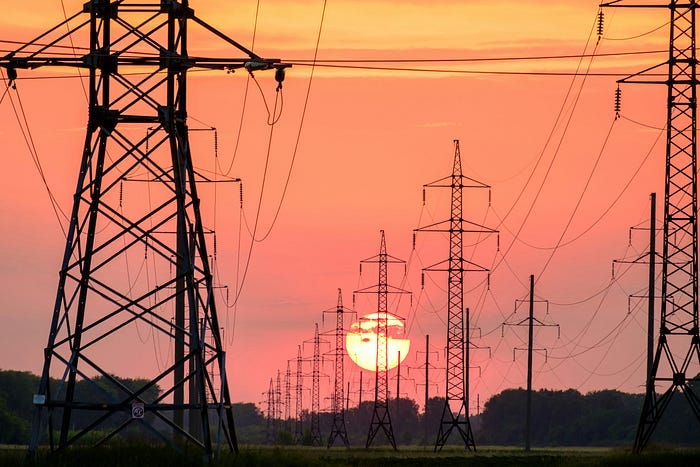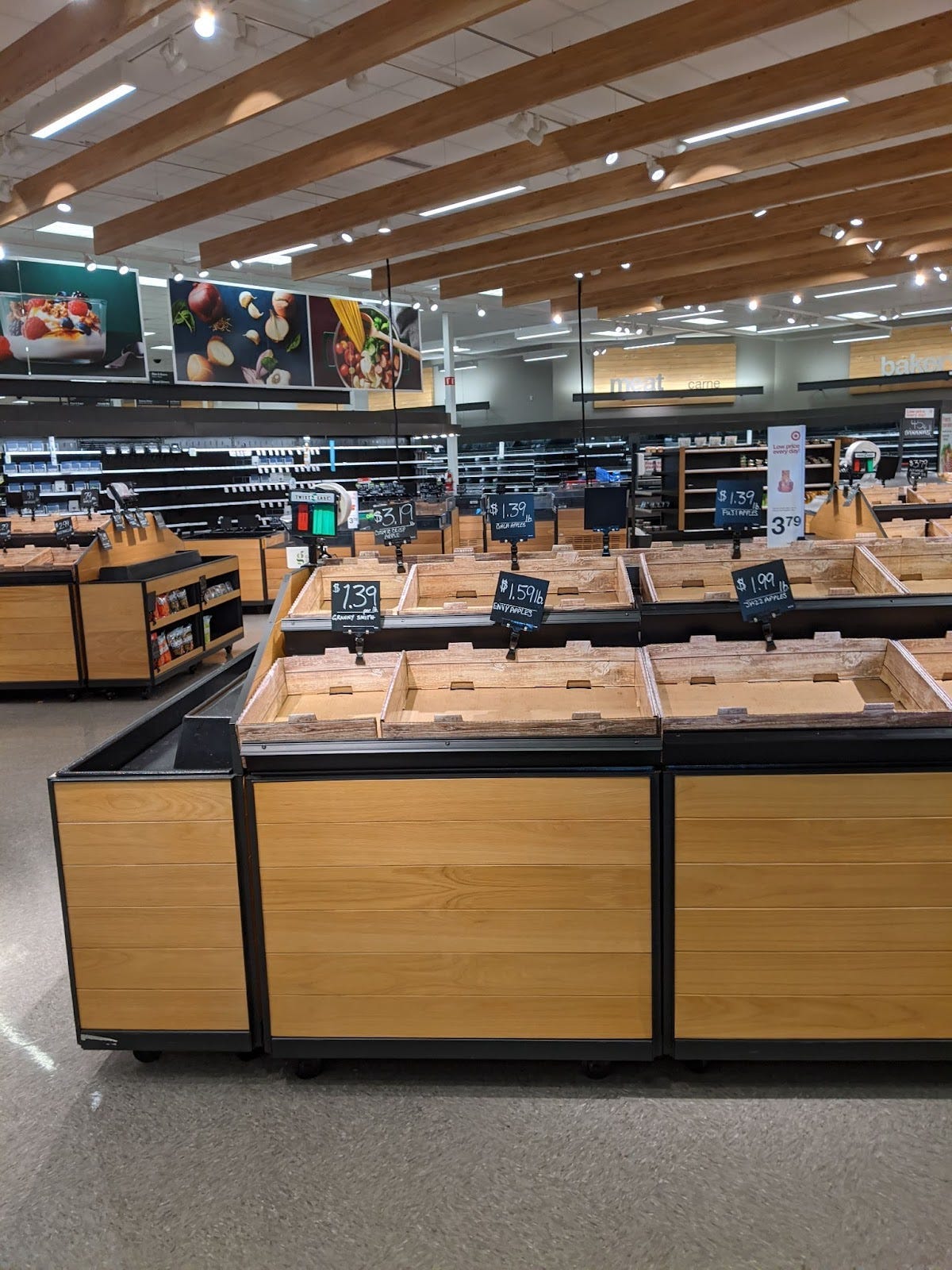Will Internet Outages Plunge Us Into a Digital Dark Age?
Internet outages are becoming increasingly common. This affects your ability to work or run your business. How will you keep the lights on when the internet goes down?
Hurricane Beryl recently barreled into Texas. While it wasn’t the worst hurricane Texas has seen, it wasn’t just another storm either.
In the aftermath millions in Houston found themselves without power. Meanwhile at least one local news outlet is reporting that 11 individuals have lost their lives as a result of the storm.
Other metro areas like Austin were largely spared from the storm, but they weren’t totally out of the woods. A statewide Spectrum outage left thousands across the state offline.

I was one of those individuals. After trying to connect to the internet in vain, Zoom calls turned into old-fashioned phone calls. As I tried to wrap up my day, I found myself unable to. Even the hotspot on my Verizon-powered phone was barely putting out a signal.
Whether it’s the internet or a specific service, outages aren’t unheard of. They’re becoming increasingly common as servers and outdated infrastructure tries to cope with surging demand.
In a remote world where workers and small businesses rely on an internet connection to collaborate and use a variety of different tools and platforms, the inability to log on to the internet is more than just a First World problem. The loss of connection means the inability to generate revenue or earn an income.
The internet and the systems that run on it are a core component of our economic lives. But what happens when we become disconnected? How will we work — and earn money — if the internet goes down for days, weeks, or even months?
That’s what this essay will dive into. It will explore one of the central risks of adopting a fully digital economy — loss of access. It will examine some of the unintended consequences workers and business owners face when the internet goes down. At the end, it will offer recommendations for how users can mitigate those unintended consequences.
Most workers take access to the internet for granted. They aren’t aware just how vulnerable they are to a variety of risks that could knock it offline.
Data Center Alley is arguably the most valuable piece of real estate in the country that you’ve probably never heard of. Located in Northern Virginia, data centers located here process around 70% of the world’s internet traffic every day.
Large tech companies that run on Amazon Web Services — like Netflix — and a small business’s Shopify store are all routed through the same data centers. While bigger companies like Google, Microsoft, and Meta all have backup storage centers and contingency plans, the vast majority of internet users do not. If something happens and the data centers go down, it would have a calamitous effect on the American economy.
One issue facing data centers in Northern Virginia is the toll rising internet traffic is taking on outdated infrastructure. The electricity used to power the coffee pot that makes your morning cup of Joe is the same electricity that powers the internet. It’s a power grid that is quickly aging and in desperate need of modernization to adapt to changes in energy production and consumption.
While venture capitalists and startup founders pour precious time and resources to innovate the experience you have on the internet, they aren’t as concerned about ensuring that your experience continues to be powered.
It’s up to public funding for that. Public funding that could be too little and come too late. The Washington Post reports:
“Data centers also consume massive amounts of energy.
One data center can require 50 times the electricity of a typical office building, according to the U.S. Department of Energy. Multiple-building data center complexes, which have become the norm, require as much as 14 to 20 times that amount.
The demand has strained utility companies, to the point where Dominion Energy in Virginia briefly warned in 2022 that it may not be able to keep up with the pace of the industry’s growth.
The utility — which has since accelerated plans for new power lines and substations to boost its electrical output — predicts that by 2035 the industry in Virginia will require 11,000 megawatts, nearly quadruple what it needed in 2022, or enough to power 8.8 million homes.”
Aging infrastructure is just one example of the threats facing the World Wide Web. In Texas, weather is another risk.
Unlike the rest of the lower 48, Texas is the only state in the country with its own power grid. When a snowstorm hit Texas in 2021, the grid came within 4 minutes and 37 seconds from collapsing.
The effects of the storm were catastrophic. Around 246 people lost their lives. The impact of the storm brought the economy to a grinding halt. According to the Federal Reserve Bank of Dallas:
“The power outages led to widespread damage to homes and businesses, foregone economic activity, contaminated water supplies and the loss of at least 111 lives. Early estimates indicate that the freeze and outage may cost the Texas economy $80 billion–$130 billion in direct and indirect economic loss.”
I was in Austin during that snowstorm. While ice-covered roads made it impossible to engage in routine economic activities, rolling power outages left remote workers without heat or internet connectivity. There was nothing anyone could do but wait.
Loss of internet access — or access to internet-connected tools and platforms — is a risk almost all of us face yet none of us are aware of. For W2 workers, the cost is shouldered by their employer. Internet outages simply result in leaving the office early and a loss of production for the day.
But what about the growing number of solopreneurs, freelancers, and small businesses that rely on the internet to power their businesses? When a cafe can’t accept electronic payments through an internet-connected POS system or a freelancer can’t follow up with leads to land new business, it results in a direct loss of revenue.
A short outage that lasts a few hours might not have catastrophic effects. But what about a long-term outage? What if you’re left without internet connectivity for days, weeks, or even months on end? That’s a bigger problem.
A recent cyberattack resulted in $600 million in lost revenue for car dealerships around the country. This foreshadows what could happen if users faced a long-term internet outage.
Along with the risks that come from aging infrastructure and intense weather events, there’s another risk worth taking into consideration — cyber attacks.
While you might think of a nerdy 15 year-old carrying out a cyber attack from his bedroom, the reality is cyber attacks are big business. North Korea, a country that is largely isolated from the rest of the world, relies on cyber attacks to generate revenue for its economy and fund its nuclear program.
There’s good reason to believe that cyberattacks against economically critical digital infrastructure — like financial systems and data processors — will continue to be on the rise.
Last month, a massive cyberattack brought the automotive industry to its knees. CDK Global, a software that powers car dealerships, went offline after hackers demanded a ransom in exchange for the restoration of services.
For almost three weeks, car dealerships have had to revert to analog methods of doing business. While this might not seem like a big deal, by being forced to go offline, dealerships became less productive as a result.
According to reporting by Ars Technica, the attack led to an estimated $600 million in losses and an overall decline in June car sales. With CDK back online, it’s likely the indirect losses will be much higher as workers begin migrating analog data onto CDK from work performed during the outage.
While this might seem like an isolated incident, it reveals there is an unintended consequence of our modern dependence on internet connectivity. Whether it’s software-as-a-service or the internet itself, our ability to engage in economic activity depends on being connected to a digital world.
For digitally native workers, this is an actual problem that most of us ought to be considering more deeply. The recent power outage in Texas left customers unable to connect to the internet for several hours. Meanwhile the outage at CDK disrupted business in a key sector of the American economy for several weeks.
What happens if internet connectivity becomes more disrupted? What if a broad stroke cyber attack leaves Americans offline for months on end?
A report from the International Monetary Fund, details the risks cyberattacks pose to the financial sector, a core component of the digital economy. The IMF warns:
“The financial sector is highly exposed, and a severe cyber incident could pose macro-financial stability risks through a loss of confidence, disruption of critical services, and spillovers to other institutions through technological and financial linkages.”
The vast majority of workers and small businesses do not have a plan in place. While a small disruption would certainly leave an impact, a cyber attack against tools, resources, platforms, or the aging power grid itself could leave Americans exposed to economic volatility they have never seen before.
Final takeaway.
The world is undergoing a massive transition toward an economy that is increasingly digital. The ability to perform work, get paid, engage in routine consumer transactions, and navigate yourself through traffic is dependent on connectivity to the internet.
Aging infrastructure, extreme weather events, and malicious attacks create systemic risks for workers, business owners, and freelancers who are dependent on internet connectivity.
While most outages are resolved in a matter of hours or days, the recent CDK Global outage reveals that isn’t always the case. Weeks of lost economic activity can have very real consequences.
As workers reskill to adapt to changes in the labor market, they also need to look for opportunities to mitigate risks. While mastering a digital platform is a good idea to build a valuable skill set, only having competency in digital skills won’t be useful if there’s a sustained power outage or if the platform goes down.
To become more adaptive to the changing economy, workers need to diversify the skills they offer to the market. This should include a skill that can be performed offline and it’s one of the reasons why I think mastering a trade or a craft is more important now than ever before.
CDK’s outage slowed business, resulting in millions of dollars in lost economic activity, but it didn’t stop production. Dealerships went offline and continued business as usual, albeit at a slower pace.
The same can’t be said for a SaaS company, a digital ad agency, or even a writer like me. While I could still write offline, I would have no means of distributing my work. Without distribution, I would have no way of earning an income. An outage at Medium, for example, would have devastating consequences on my own economic well-being.
Workers need to start considering the risks that come with the types of employment they pursue. Can your job be done offline if something happens? If not, do you have a contingency plan in place?
Exposure to these risks has traditionally been shouldered by companies rather than individuals. But with more and more individuals finding themselves as free agents in the labor market, this is something they will need to take into account moving forward.
Did you find this post helpful? Hit the ♥️ at the bottom. Doing so will share this post with more readers.








Very timely article as AI is expected to super charge cyber crime.